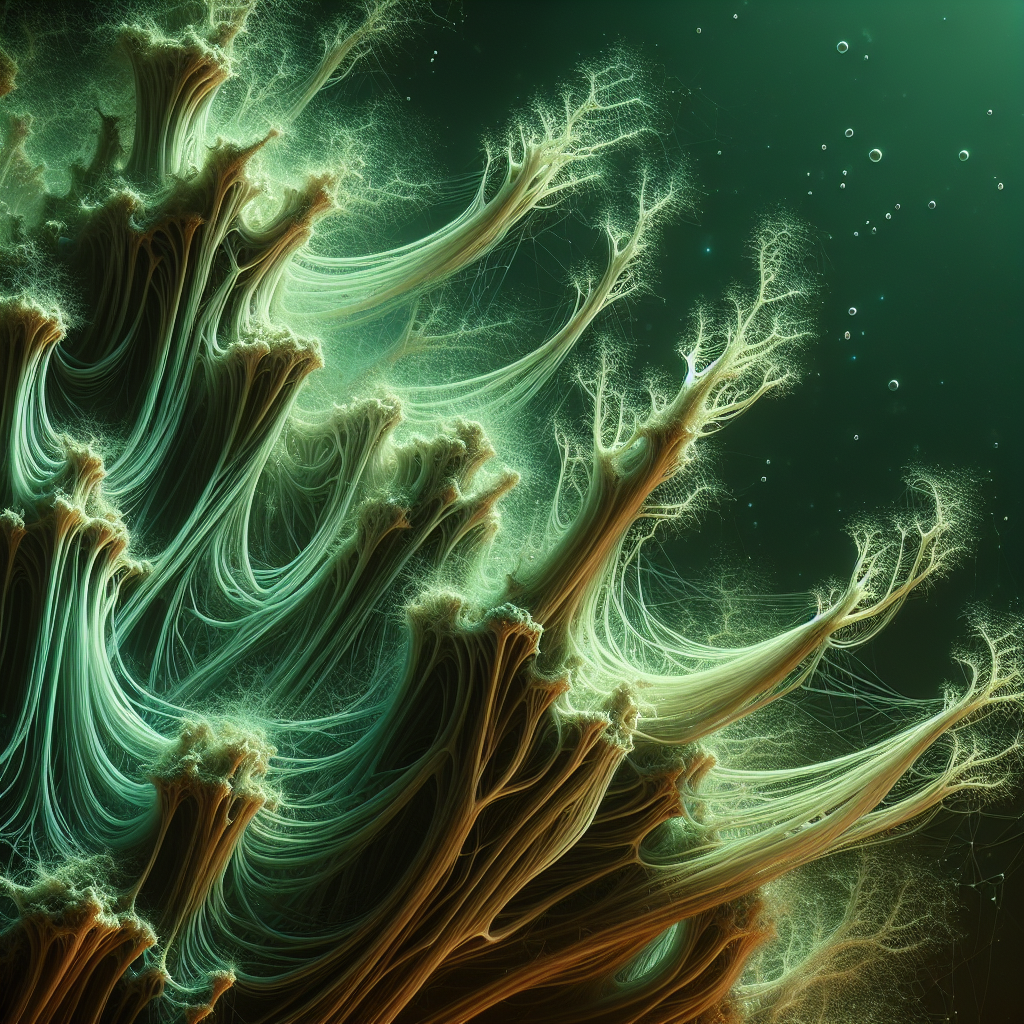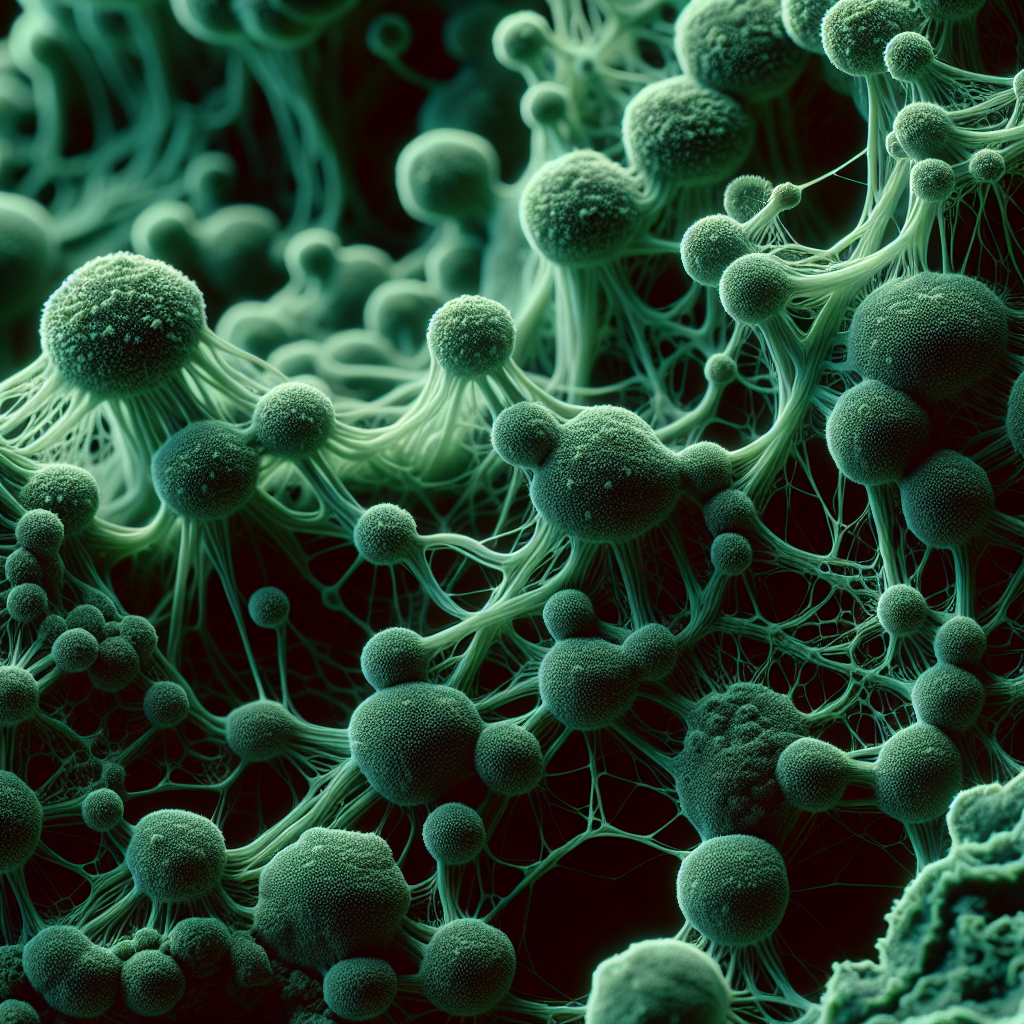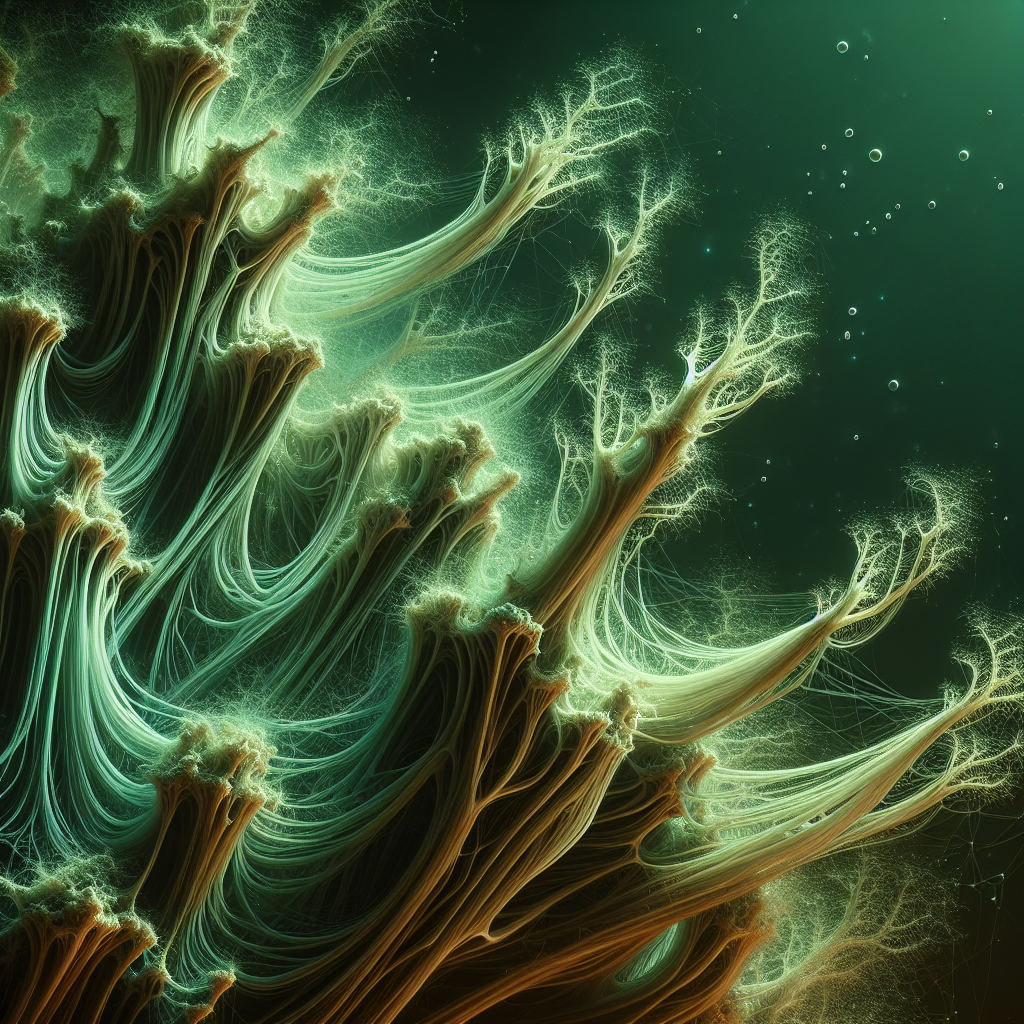In the intriguing world of ecology and biology, the green mycelium stands out as a mystery waiting to be solved. “The Mysteries of Green Mycelium” provides you with an aesthetic journey into the complexities of this branch of fungi, revealing its significant role in the environment and the distinct factors influencing its enigmatic green color. Throughout this article, you’ll get acquainted with the ecological advent of green mycelium, the metaphoric implications of its existence, and the scientific phenomena behind its vibrant coloration. Your understanding of our natural world will unequivocally deepen as you comprehend the far-reaching implications of green mycelium.
Understanding Green Mycelium
The study of fungi engenders an incredible versatility of knowledge, encompassing scientific fields from medicine to agriculture. One particularly interesting facet is Mycology, the study of fungi. Presenting to you an intriguing aspect of mycological discussions – green mycelium.
Definition of Green Mycelium
Green mycelium refers to the branching, thread-like vegetative part of a fungal colony, which contains green pigmentation. Similar to other mycelium, green mycelium is the main body of fungi, sets the platform for reproduction, and plays a critical role in nutrient absorption from the habitat.
Types of Green Mycelium
Green mycelium is not just one entity, but a spectrum of varying species, each characterized by their structure, growth pattern, and type of green pigmentation. Key types include those produced by Trichoderma, Penicillium, Aspergillus, and several less well-known species.
Brief History of Green Mycelium Discovery
The discovery of green mycelium traces back to early botanical investigations when scientists began noting the presence of a green pigmentation in certain fungi. Subsequent studies unveiled the array of fungi species that bear this characteristic, opening a new dimension in mycological research.
The Structure of Green Mycelium
The fundamental structure of every mycelium, including the green types, pivots around hyphae and the mycelial mat.
Hyphae and Mycelial Mat
Hyphae are individual filaments that collectively form the mycelial mat – the robust network that creates the body of the fungus. In green mycelium, these hyphae contain compounds that give the green pigmentation.
Complete Anatomy of Green Mycelium
Beyond the hyphae and mycelial mat, green mycelium, like their counterparts, comprise the cell wall, plasma membrane, cytoplasm, organelles, and nuclei. The cell wall, typically made of chitin, provides structural integrity, while the plasma membrane regulates fluid and molecular movement.
Role of Mycelium in Fungi Life Cycle
The Mycelium is the primary growth stage in a fungi’s life cycle. It extends outward, decomposing materials while absorbing nutrients. This vegetative state lays the groundwork for the reproductive phase.

The Green Pigmentation in Green Mycelium
The distinctive feature of green mycelium, its pigmentation, is not just a visual trait but has biological significance.
Green Pigmentation Explanation
The green color results from the presence of green spores or green metabolic compounds within the hyphae. These colorations are often due to secondary metabolites such as pigments and antibiotics.
Importance of Green Coloration
Pigmentation can protect the fungi from harmful elements like ultraviolet radiation or contribute to surviving competition against other organisms. For scientists, green coloration allows for easy identification and differentiation of green mycelium from others.
Factors Influencing Green Pigmentation
Several factors can influence the density of green pigmentation in mycelium, including available nutrients, light exposure, and temperature. It’s an adaptation allowing fungi to survive in varying environmental circumstances.
Fungal Species that Produce Green Mycelium
A diversity of fungi species produce green mycelium, differing in their growth, structure, and reproductive methods.
Trichoderma
Recognized for their vibrant green mycelium, Trichoderma species are commonly found in soil and decaying wood. They serve as potent biocontrol agents against plant pathogens.
Penicillium
Renowned for their contribution to penicillin, the Penicillium species appear as a dense mass of green mycelium. They are generally cosmopolitan and found in a habitat rich in organic matters.
Aspergillus
With over 200 species, Aspergillus species have green mycelium, known for their supreme biological importance in biotechnology and medical fields.
Others Less Common Green Mycelium Producing Species
Other less frequent, but notable green-mycelium-bearing species include Cladosporium and Talaromyces, among others.

Reproduction in Green Mycelium
Reproduction in mycelial organisms, including green ones, can be either asexual or sexual.
Asexual Reproduction in Fungi
The asexual method involves the production of sporangiospores or conidia by the parent mycelium, which germinate and grow into new mycelium on suitable substrates.
Sexual Reproduction in Fungi
In sexual reproduction, two compatible mating types of hyphae fuse, followed by nuclear fusion and meiosis. The resulting spores then germinate into a new mycelium.
Role of Green Mycelium in Reproduction
Green mycelium plays a fundamental role in fungal reproduction, providing the structure where reproductive structures form and releasing spores for dissemination.
Green Mycelium and the Environment
Green mycelium plays an essential role in environmental health and sustainability.
Green Mycelium as Decomposers
As decomposers, green mycelium break down dead organic matter, returning nutrients back to the soil and helping maintain the planet’s carbon cycle.
Role in Nutrient Cycling
Through decomposition, green mycelium play a pivotal role in nutrient cycling, particularly carbon, nitrogen, and phosphorus.
Interactions with Other Organisms
Green mycelium form mutualistic relationships with plants, enhance nutrient uptake and provide resistance against pathogens.
Green Mycelium and Soil Health
By decomposing organic matter and forming feeding networks, green mycelium help improve soil structure, fertility, and overall health.
Cultivation of Green Mycelium
Using controlled conditions, mycologists can cultivate green mycelium in the lab or even at home.
Lab Cultivation Techniques
In the laboratory, green mycelium is grown on agar plates made with an appropriate nutrient medium. Sterility is essential to prevent unwanted microbial contamination.
Home Cultivation of Green Mycelium
At home, enthusiasts can cultivate green mycelium using DIY kits or home-made substrates. While some challenges may arise, careful handling and attention to conditions can yield a successful culture.
Challenges in Green Mycelium Cultivation
Contamination from non-target organisms, maintaining optimal conditions, and dealing with potential health hazards are key challenges in cultivating green mycelium, whether in the lab or at home.
Applications of Green Mycelium
Green mycelium holds promising possibilities for various applications, from environmental sustainability to health benefits.
Green Mycelium in Bioremediation
Due to their robust metabolism, some green mycelium species can break down toxic pollutants, offering a sustainable strategy for environmental cleanup or ‘bioremediation’.
Use in Industrial Processes
Many industrial processes, such as fermentation, enzyme production, and biomass conversion, utilize green mycelium due to their capabilities to produce valuable molecules.
Potential Medical and Health Applications
Thanks to their bioactive compounds, some green mycelium species provide therapeutic possibilities, from antibiotics like penicillin to potential anti-cancer agents.
Negative Aspects of Green Mycelium
Despite the benefits, green mycelium can also present downsides, primarily when they grow in unwelcome places.
Green Mycelium as Potential Pathogens
Certain green mycelium, like Aspergillus and Penicillium, can become pathogens causing disease in humans or crops.
Role in Food Spoilage
Green mycelium could contaminate food products, leading to spoilage and a significant risk to human health.
Allergic Reactions and Toxicity Concerns
Some people may have allergies to green mycelium, while specific species produce toxic secondary metabolites, causing health concerns if improperly handled.
The Future of Green Mycelium
The interest in green mycelium, its ecology, taxonomy, and potential uses, continues to grow.
Advancements in Mycological Studies
With continuing advancements, mycologists will refine their understanding of green mycelium and learn to harness their potentials further.
Potential Innovations in Green Mycelium Uses
From innovative packaging solutions to waste management, the future could see the burgeoning applications of green mycelium.
Challenges and Opportunities for Future Research
While challenges regarding cultivation, health hazards, and ecological concerns remain, opportunities for exploring novel benefits of green mycelium are exciting, promising a brighter, greener future in mycology.
